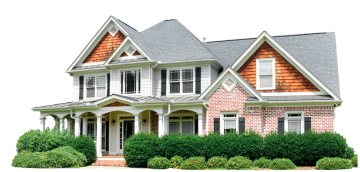For many homeowners in the UK, finding more space without having to move house is a common goal. A lean-to extension is one of the simplest, most stylish, and most affordable methods to extend your living space. No matter if you are planning to create a bright, open-plan kitchen or design a cosy dining space.
In this guide, we will explore what lean-to extensions are, types of extensions, their benefits, unique ideas, cost range, and conclusion.
What is Lean-to Extension?
A lean extension is the simplest addition to your home that leans against the main wall. The most important feature is the slanted roof, which has a single pitch and slopes away from the home. A lean-to extension works nicely, with a clean and minimalist design that is suited for your architectural design, no matter if it’s traditional or modern.
You can construct it in different materials, such as brick, which is a strong material that gives a permanent structure, or timber for warmth and character, and glass for a bright contemporary look. People really like a lean-to timber extension for the garden space, while a lean-to roof extension with a skylight may also make the interior feel open and airy.
Various types of lean-to house extensions:
A lean-to-house extension is a way to expand your home. It’s versatile and modern, with various types depending on your available space and purpose. Here are the most common types:
Side extension:
A side extension expands your home into unused space in various styles, including single-storey and double-storey extensions. This kind of extension is approved for a sufficient distance, usually in properties where the side recovery area is functional. You can select how to complete your house and what it’s used for. It all depends on your own idea. You can design it however you want.
Single-storey:
Generally, a single-storey place leans only on one-level extensions. With a single-storey extension, you can expand your living space in your own way and add a room, such as a storage room, private area, or secret room, partially enhancing your space.
Double-storey:
Double-storey extension concepts depend on extending upward areas that would normally be single-storey extensions. So, it’s allowed expansion criteria; you may not require formal planning approval.
Rear extension:
A rear extension is the most common type of home extension. It expands your home into the back garden, which makes extra space in your home without purchasing a new home.
Innovative lean-to extension ideas:
If you are planning a lean-to home and you want to create a unique and elegant look, here are creative ideas which make your space that combine practicality with style. These ideas help you design an extension that truly stands out.
Glass roof extension:
A lean-to glass extension with a glass roof is perfect for homeowners who want a bright and airy space. Glass-roof extensions catch the natural light from the roof, which makes your living area more welcoming and brighter. This design is especially designed for the kitchen or dining area and garden-facing lounge area, which gives an ideal look for your home.
Timber design:
If you prefer a warm and natural light, a lean-to wooden extension or timber-framed design can add charm and character to your home. Timber not only gives an organic look but also blends beautifully with the garden surroundings. It’s an eco-friendly system that provides great durability and insulation when properly treated.
Open-plan kitchen layout:
A lean-to kitchen extension changes the complete layout of your home. When you open the back or side wall, the kitchen or dining area creates a unique look which gives an airy and connected zone. This is perfect for a family gathering or guest entertaining. You can create a stylish and functional hub look with the help of a modern bi-fold door and sleek finishing.
Benefits and Drawbacks of a Lean-To Extension for Modern Homes
A lean-to extension is the smart and practical way to create extra space in a modern house. There are some clear benefits and drawbacks. Before understanding this, it’s helpful to choose the right option for your property.
Benefits:
- It’s a cost-effective way to expand your home.
- A lean-to extension is a straightforward structure with a shorter construction time; it’s more affordable compared to other extensions.
- It’s a simple layout; a lean-to extension can be constructed quickly.
- It causes normal disturbance to your daily life, and it’s ideal if you want to add space without a long construction time.
Drawbacks:
- If you need a large multi-room extension, the design may not provide enough space, and it is just suited for smaller additions.
- Some people might prefer a detailed or characterful design that feels a bit more expensive.
Comparison Between Lean-To and Traditional Extensions:
A lean-to-house extension differs from the traditional extension mainly in its design, simplicity, cost, and construction process. Traditional extensions usually involve a more complex roof structure and an additional supporting wall. As a result, they require longer planning approval, a larger budget and an extended construction timeline.
On the other side, a lean-to-roof extension provides a simpler and faster solution. Normally, it requires less material, less labour, and it’s under permitted development rights depending on the property and building regulations. This makes it a smart option for homeowners who want extra living space faster and more affordably.
How much does an average lean-to extension cost?
Lean-to-extension costs vary depending on several factors, including the size of your home, the location, the building material, the complexity of the project, and the overall level of finishing you choose.
On average:
Basic lean-to extension: £2,000 – £2,500 per square metre.
High-end-glass design: £3,000 – £3,500 per square metre.
These estimates usually include the main construction, but it’s important to consider additional costs such as plumbing, electrical work, heat installation and interior finishing like decor or flooring.
Do lean-to house extensions suit UK properties?
Yes, absolutely, a lean-to extension is very popular in the UK due to its simple design and versatility. No matter if you have your own Victorian terrace or semi-detached terrace, or a countryside cottage, this type of extension easily suits your property and design.
Conclusion:
A lean-to extension is one of the most practical and stylish ways to expand your home in various designs. It’s a clean design, flexibility and affordability in less time. That’s a great choice for homeowners in the UK looking to add extra space to their living area. It’s an investment in comfort value and modern living.
FAQ’S
Most of the time, you don’t need any planning permission for a lean-to extension. However, it depends on a specific factor; if you change the design of your home or exceed the limit, then it’s compulsory to get planning permission.
There is no compulsory requirement to hire an architect for a lean-to extension, but having one can really improve your design quality and approval process.
The main difference between a lean-to and a conservatory extension is in their structure and purpose. A lean-to extension is a basic and simple single-sloped roof which is attached to the house on the other side. A conservatory extension is a more complex pitched roof and a more elaborate design.


 Describe your needs
Describe your needs
 it only takes 30 seconds
it only takes 30 seconds